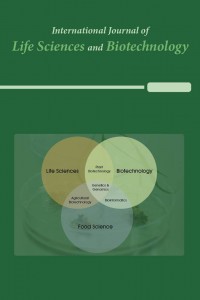
International Journal of Life Sciences and Biotechnology
Yazarlar: Nurul Hidayah SAMSULRİZAL, Nik Yusnoraini YUSOF
Konular:Bitki Bilimleri
Anahtar Kelimeler:Comparative genomics,Inparanoid,Cell wall
Özet: Ripening is a complex developmental process and involves many events such as textural and constitutional changes. The texture of fleshy fruits is one of the major criteria for consumer choice. However, the molecular determinants of ripening- associated changes in texture or “softening” are relatively poorly understood and seem to involve a large number of cell wall remodelling factors. The recent completion of the tomato genome sequence has revealed more than 50 cell wall structure-related genes that are expressed during fruit development and ripening and may impact texture changes in this fruit. The aim of the project is to compare, on a genome-wide scale, ripening-related gene expression in a range of fleshy fruits and especially those linked with cell wall remodelling. Then by identifying orthologous genes in different fruit species to make predictions about those genes likely to important for the softening process in all fleshy fruits. Comparative genomics analysis of tomato (Solanum lycopersicum), banana (Musa acuminate), melon (Cucumis melo) and grape (Vitis vinifera), has been undertaken using Inparanoid, Multiparanoid and BLAST2GO software. This analysis showed that a total of 8,982 (25.86%) gene models could be identified in common between all four genomes based on comparison of amino acid sequences. Of these genes, 262 in tomato, 252 in grape, 261 in melon, and 198 in banana were identified as encoding cell wall structure-related proteins. However, comparison of the expression patterns of these genes revealed that most were expressed in tissues other than ripening fruits, and of the fruit expressed genes only a small number were common between different fruit species. This in silico analysis should provide additional clues as a target for manipulation of fruit softening in a range of fleshy fruit species. These also provide new opportunities to develop varieties of tomatoes that can survive the trip from the farm to the grocery store whilst maintaining excellent flavour and shelf-life.
Dergi editörleri editör girişini kullanarak sisteme giriş yapabilirler. Editör girişi için tıklayınız.